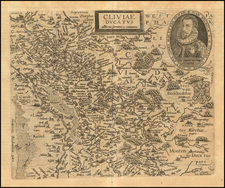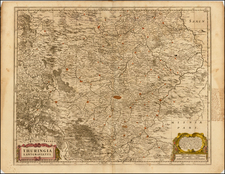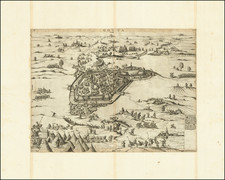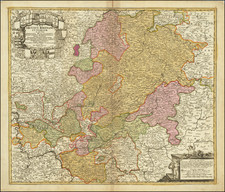Colorful map of Franconia, a region in Germany, dating from around 1830.
The map is detailed, showing the boundaries, cities, rivers, and relief of the area with color coding to differentiate various regions and features.
Franconia's history in the second half of the 19th century is marked by significant changes due to the unification of Germany. Before unification, the region was divided into multiple territories within the Holy Roman Empire and later, the German Confederation. Post-1830, Franconia would have experienced the tumult of the revolutions of 1848 and subsequent political shifts leading up to the creation of the German Empire in 1871.
The larger cities in Franconia, such as Nuremberg, Würzburg, and Bamberg, played crucial roles in the region's economic and cultural life. They were centers of trade, industry, and learning. The map may show these cities with particular prominence.
Geopolitically, the region was influenced by the power struggles of neighboring states such as Prussia and Austria. After the Austro-Prussian War in 1866 and the subsequent annexation of various German states by Prussia, Franconia became part of the newly formed German Empire under Prussian dominance, impacting its political landscape significantly.
The Lizars were a Scottish family of engravers and printers who produced many views and maps. Daniel Lizars Sr. (1754-1812) was the son of a shoemaker, but he apprenticed with Andrew Bell, a printer and engraver. Lizars set up his own printworks near St. Giles Cathedral and took on his own apprentices, including George Bartholomew, whose son John would go on to found the important mapmaking firm later know as John Bartholomew & Son Ltd.
Daniel Sr. had three sons: Daniel Jr., John, and William Home. He also had a daughter, Jane Home. Daniel Jr. (1793-1875), the youngest of the boys, apprenticed in his father’s shop alongside George Bartholomew. When his father died in 1812, Daniel Jr. took over much of the business, expanding it and specializing in maps. The company went bankrupt in 1832, however, and Daniel emigrated to Canada.
John Lizars (1792-1860), the middle son, studied medicine and became Professor of Surgery at the Royal College of Surgeons of Edinburgh, as well as senior surgeon at the Royal Infirmary of Edinburgh.
William Home Lizars (1788-1859), the eldest, also apprenticed in his father’s shop. After learning engraving, William entered the Trustees’ Academy to learn under John Graham. He was a skilled painter and artist. When his father died, and after his Daniel Jr. left, he carried on printing and invented a method of etching that looks like wood engraving.









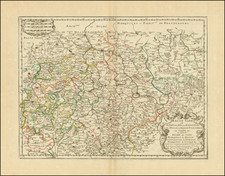
![[Rhine River] Nova Totius Rheni Descriptio ex celeberrimis et varijs Autoribus, in unam tabulam redacta . . . 1672](https://storage.googleapis.com/raremaps/img/small/62395.jpg)
